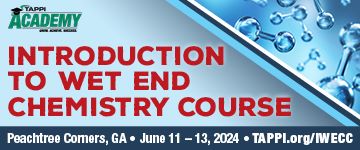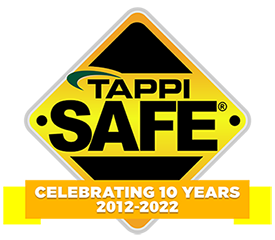 Search
Search
Use the search bar or filters below to find any TAPPI product or publication.
Filters
Content Type
Publications
Level of Knowledge
Committees
Collections
Journal articles

Magazine articles

Dynamic out-of-plane compression of paperboard — Influence of impact velocity on the surface, TAPPI Journal February 2024
ABSTRACT: Processes that convert paperboard into finished products include, for example, printing, where the paperboard is subjected to rapid Z-directional (ZD) compression in the print nip. However, measuring and evaluating the relevant properties in the thickness direction of paperboard are not necessarily straightforward or easy. Measuring at relevant, millisecond deformation rates further complicates the problem. The aim of the present work is to elucidate some of the influences on the compressive stiffness. Both the initial material response and the overall compressibility of the paperboard is studied. In this project, the effect on the material response from the surface structure and the millisecond timescale recovery is explored.The method utilized is a machine called the Rapid ZD-tester. The device drops a probe in freefall on the substrate and records the probe position, thus acquiring the deformation of the substrate. The probe is also allowed to bounce several times on the surface for consecutive impacts before being lifted for the next drop. To investigate the time dependent stiffness behavior, the probe is dropped several times at the same XY position on the paperboard from different heights, thus achieving different impact velocities. The material response from drops and bounces combined allows study of the short-term recovery of the material. The material in the study is commercial paperboard. The paperboard samples are compared to material where the surface has been smoothed by grinding it. Our study shows that there is a non-permanent reduction in thickness and a stiffening per bounce of the probe, indicating a compaction that has not recovered in the millisecond timescale. Additionally, a higher impact velocity has an initial stiffening effect on the paperboard, and this is reduced by smoothing the surface.
Journal articles

Conference review: Recycling sessions at TAPPI PEERS, TAPPI JOURNAL February 2012
Conference review: Recycling sessions at TAPPI PEERS, TAPPI JOURNAL February 2012
Journal articles

The outer limits of paper recovery and recycling, TAPPI JOURNAL, April 1997, Vol. 80(4)
The outer limits of paper recovery and recycling, TAPPI JOURNAL, April 1997, Vol. 80(4)
Journal articles

Clonal forestry and genetic engineering: where we stand, future prospects, and potential impacts on mill operations, TAPPI JOURNAL, February 1998, Vol. 81(2)
Clonal forestry and genetic engineering: where we stand, future prospects, and potential impacts on mill operations, TAPPI JOURNAL, February 1998, Vol. 81(2)
Journal articles

Champion international's long log pine chip mill: a nontraditional approach, TAPPI JOURNAL, February 1998, Vol. 81(2)
Champion international's long log pine chip mill: a nontraditional approach, TAPPI JOURNAL, February 1998, Vol. 81(2)
Journal articles

A man of ideas: 1998 Gunnar Nicholson Gold Medalist Douglas Wahren, TAPPI JOURNAL, February 1998, Vol. 81(2)
A man of ideas: 1998 gunnar nicholson gold medalist douglas wahren, TAPPI JOURNAL, February 1998, Vol. 81(2)
Journal articles

Effect of papermaking and coating variables on offset-print quality - part 1: papermaking variables, TAPPI JOURNAL, October 1993, Vol. 76(10)
Effect of papermaking and coating variables on offset-print quality - part 1: papermaking variables, TAPPI JOURNAL, October 1993, Vol. 76(10)
Journal articles

Arundo donax l. reed: new perspectives for pulping and bleaching 1. raw material characterisation, TAPPI JOURNAL, January 2001, Vol. 84(1)
Arundo donax l. reed: new perspectives for pulping and bleaching 1. raw material characterisation, TAPPI JOURNAL, January 2001, Vol. 84(1)
Journal articles

Canadian industry: 1996 review, TAPPI JOURNAL, January 1997, Vol. 80(1)
Canadian industry: 1996 review, TAPPI JOURNAL, January 1997, Vol. 80(1)
Journal articles

Outsourcing providers, TAPPI JOURNAL, February 1997, Vol. 80(2)
Outsourcing providers, TAPPI JOURNAL, February 1997, Vol. 80(2)






